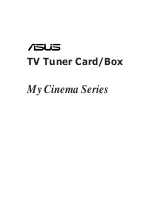
PAGE 19
The output circuit of a transmitter, the transmission line, and the antenna, all have a characteristic
impedance. For reasons beyond the scope of this document, the standard impedance is nominally 50 ohms
resistive, with zero capacitive and zero inductive components. When all three parts of the system have the
same impedance, the system is said to be “matched”, and maximum transfer of power from the transmitter
to the antenna occurs. While the transmitter output circuit and transmission line are of fixed, carefully
designed impedance, the antenna presents 50-ohm, non-reactive load only at its natural resonant
frequencies. At other frequencies, it will exhibit capacitive or inductive reactance, causing it to have an
impedance other than 50 ohms.
When the impedance of the antenna is
different from that of the transmitter and
transmission line, a “mismatch” is said to
exist. In this case, some of the RF energy
from the transmitter is reflected from the
antenna back down the transmission line
and into the transmitter. If this reflected
energy is strong enough, it can damage the
transmitter’s output circuits.
The ratio of transmitted to reflected
energy is called the “standing wave ratio”,
or SWR. An SWR of 1 (sometimes
written 1:1) indicates a perfect match. As
more energy is reflected, the SWR
increases to 2, 3, or higher. As a general
rule, modern solid state transmitters must
operate with an SWR of 2 or less. Tube
exciters are somewhat more tolerant of
high SWR. If a 50 ohm antenna is
resonant at the operating frequency, it will
show an SWR close to 1. However, this is
usually not the case; operators often need
to transmit at frequencies other than
resonance, resulting in a reactive antenna
and a higher SWR.
Summary of Contents for AT-100Pro
Page 8: ...PAGE 8 ...






































